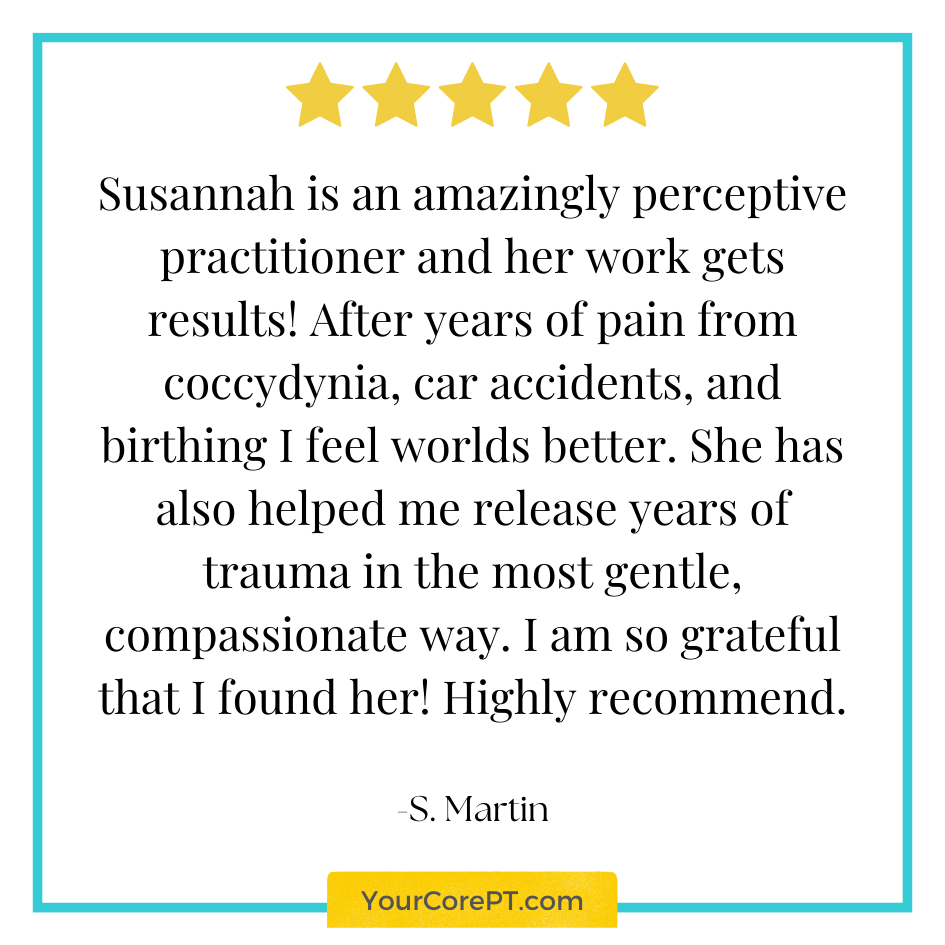Pregnancy
While your body supports the growth of new life…
you need support too.
Pregnancy is an incredible physical feat from conception to delivery. Every pregnancy and birth process is different; having a practitioner who can help you with birth prep and maintaining fitness, to treating unexpected pain, instability, or incontinence is crucial. I love witnessing the transformation from pregnancy to postpartum and supporting moms during this incredible phase of life.
Treatment and support for:
Urinary urgency, frequency & incontinence
Constipation
Diastasis Recti
Swelling of the lower extremities
Hemorrhoid care
Fitness during pregnancy
& more…
Birth prep
Pubic symphysis dysfunction
Low back pain
Hip pain
Rib pain
Pelvic pain
Carpal tunnel syndrome
pregnancy and postpartum FAQs:
-
No birth experience is the same, but learning about birth options can make the experience more empowering for you. These include tools like:
perineal prep work
‘pushing’ strategies
various labor positions based on your body
the use of TENS during and after labor
counterpressure techniques and more
Typically 2 sessions are sufficient for evaluation and education with an uncomplicated pregnancy. Many people choose to bring a partner for their second session who will be present for your delivery.
-
This depends on your situation & goals!
If you are feeling discomfort at any time throughout your pregnancy (pain, incontinence, constipation, swelling, etc.) that is impacting your quality of life, I am here to help!
Some people want to understand more about exercise modifications and progression during pregnancy and begin in their first trimester, whereas others who want to learn more about birth prep and delivery, begin at the start of their third trimester.
Schedule a free 15-minute consultation to determine what is best for you!
-
A general orthopedic assessment of the whole body is where we start.
If an internal assessment is warranted, the option for an internal exam depends on the comfort level of the patient, pregnancy risk assessments, and the approval of your OBGYN.
Often (out of precaution) we wait until the end of your first trimester to perform an internal pelvic floor muscle assessment. Generally, if you are cleared to have intercourse, and do not have a high-risk pregnancy, a pelvic floor muscle assessment is fine to perform (no speculums or stirrups involved…woo hoo!) If an internal assessment is contraindicated or you would prefer other options, modifications such as external visualization and palpation of the pelvic floor muscles as well as an assessment of pelvic floor muscle function rectally can be beneficial as well.
-
When you come in for a postpartum assessment I assess for things like:
posture and breathing
diastasis recti
pelvic floor muscle function
pelvic organ prolapse
c-section, episiotomy scars or tears
Based upon our findings we might employ:
Manual therapy
Neuromuscular reeducation
Therapeutic exercise and functional movement strategies
Home supportive equipment and more
-
This depends.
Internal pelvic floor muscle assessment can usually begin 6 weeks after delivery, but there is more that can be done sooner with post-partum eval and treatment. For example, some women benefit from PT for postpartum swelling, clogged milk ducts, constipation and assessment and treatment for incisions/tears prior to the 6 week mark. Each person’s needs are different. Please set up a 15-minute consultation if you have questions.
A postpartum visit at 6 weeks often includes, but is not limited to assessment of posture and breath, biomechanics and core stability, diastasis recti, pelvic floor muscle strength and coordination, pelvic organ prolapse, and pain generators if there are any. Education, manual therapy, exercise, and other interventions depend upon evaluation findings and PT assessment.



